DSAEK & DMEK CORNEAL TRANSPLANTS
Types of Partial Thickness Transplants in New York City
COPY ABOUT DSAEK & DMEK
PARTIAL THICKNESS TRANSPLANTS NYC
DSAEK FAQS
What Is DSAEK?
In the normal eye, a layer of cells known as the endothelium lines the inner surface of the cornea on a membrane called Descemet’s membrane. These cells act as tiny pumps that precisely regulate the amount of fluid in the cornea to maintain its clarity
Why DSAEK?
Medical conditions such as Fuchs’ corneal dystrophy, cataract surgery and glaucoma can lead to a decreased number of these cells. This may result in swelling and clouding of the cornea, causing decreased vision and sometimes episodes of severe pain. Advances in surgical techniques have allowed us to remove only the diseased layer of the cornea and replace it with a thin layer of donor tissue containing healthy endothelial cells. We inject an air bubble to hold this graft in position for the first few days until the pumping new cells create enough suction to hold the graft in place unassisted. The patient needs to lie flat on his/her back for several days so that the air bubble in the eye pushes the donor corneal tissue against the back layer of the patient’s cornea.
What to Expect from DSAEK?
Like a standard, full-thickness corneal transplant, this procedure is done on an outpatient basis. Visual recovery is more rapid after DSAEK, with stabilization of vision often occurring within three to four months after surgery. After DSAEK, vision remains more stable than it does with full-thickness corneal transplant. There is also a lower lifetime risk of graft rejection than in full-thickness transplantation.
Video: https://www.aao.org/annual-meeting-video/endothelial-disease-dsaek-as-gold-standard
(if can link to just the video)
DMEK FAQS
What is DMEK?
DMEK is a partial-thickness cornea transplant procedure that involves selective removal of the patient’s Descemet membrane and endothelium, followed by transplantation of donor corneal endothelium and Descemet membrane without additional stromal tissue from the donor. The graft tissue is merely 10-15 microns thick. After injecting the tissue into the anterior chamber, Dr. Rapoport orients and unscrolls the graft, and a bubble of 20% sulfur hexafluoride (SF6) is placed in the anterior chamber to support graft adherence.
Why DMEK?
DMEK offers the most rapid visual rehabilitation of any keratoplasty technique to date. Final visual acuity can be outstanding due to minimal optical interface effects. Because less tissue is transplanted, there is a lower risk of graft rejection and less long-term reliance on topical steroids compared with other types of keratoplasty.
What is the difference between DMEK and DSAEK?
The indications for DMEK are similar to those for DSAEK, including endothelial dystrophies (such as Fuchs corneal dystrophy and posterior polymorphous corneal dystrophy), pseudophakic bullous keratopathy, and other causes of corneal endothelial dysfunction.
WHY CHOOSE MANHATTAN EYE?

DMEK & DSAEK with Dr. Rapoport in NYC
At Manhattan Eye, Dr. Rapoport brings the latest advancements in imaging and surgical techniques to provide the most modern techniques to patients in need of a corneal transplant. She is an expert at DMEK, DWEK, and DSAEK and has published on the post-operative care of these surgeries. She brings her delicate surgical touch and warm bedside manner in guiding you through the corneal transplant process.
“I've been essentially blind my whole life and recently decided to get elective eye surgery. I unfortunately did not qualify for Lasik, but did qualify for PRK.
Dr. Rapoport was fantastic - she explained all my options in detail and was very diligent in giving me instructions pre/post operations - even when I asked twice/three times. She's always available to talk and super empathetic. I could not recommend a better eye surgeon!”
Dr. Rapoport was fantastic - she explained all my options in detail and was very diligent in giving me instructions pre/post operations - even when I asked twice/three times. She's always available to talk and super empathetic. I could not recommend a better eye surgeon!”
M.V.
“Best eye doctor in New York! Dr. Rapoport is very personable, professional and most importantly a great doctor. Dr. Rapoport recently performed my LASIK surgery, for which she gave me clear pre and post-op instructions and made a point to check regularly on my progress. She did a great job to put my nerves at ease and walked me through the entire process. Now three weeks after the surgery I
can see better than ever with 20/20+ vision! I strongly recommend Dr. Rapoport if you are considering LASIK, or if you are simply in need of a great eye doctor.”
N.G.
“I have now seen Dr. Rapoport for dry eyes, removal of papillomas around my eyes, and Lasik
surgery. My experiences with her have all been wonderful. She always takes the time to
explain everything really clearly, and my results have all been great. When I originally asked
about Lasik, she gave me a very balanced perspective on my options, which I really
appreciated. She also has a great energy about her, and she's just an overall pleasure to be
around. I have referred several friends and family to her and they've all said great things about
her as well. I can't recommend her enough.”
M.T.
“After seeing Dr. Rapaport for three months I have experienced the greatest improvement for
my dry eye syndrome than I have in the past 15 years. Dr. Rapaport is very knowledgable and
caring. I am very grateful to her and her staff, in particular to Amy, who has been incredibly
helpful to me. Everyone here conducts themselves in a highly professional manner, and they
also run a tight ship in terms of timeliness. I have been seen every time without waiting any
more than 5 minutes, and this I appreciate a lot. I feel very fortunate to be a patient at this
medical practice.”
H.K.
“Dr Rapoport is a skilled, knowledgeable, sincerely caring medical professional. I started
seeing her a year ago and have since moved out of state. Regardless, it’s a priority for me to
continue under her good care.
I feel confident in her abilities - and it is my eyesight afterall!”
I feel confident in her abilities - and it is my eyesight afterall!”
P.J.




